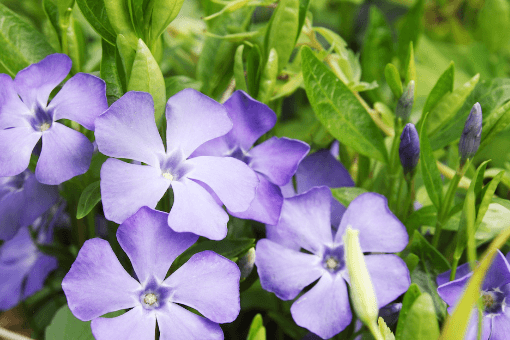Flower:A6bhb8cofyy= Periwinkle

The periwinkle flower, scientifically recognized as Vinca, is not only notable for its aesthetic appeal but also for its rich history and cultural significance. Originating from the Mediterranean, this resilient plant embodies themes of renewal and hope, making it a favored choice in both gardens and traditional medicine. Understanding its care requirements and the symbolism associated with it can enhance its presence in horticultural practices. However, the deeper implications of its historical uses and the nuances of its cultivation may reveal more than initially meets the eye. What insights might emerge from exploring these facets further?
Origins and History
The periwinkle, known scientifically as Vinca, has a rich historical lineage that traces its origins to the Mediterranean region, where it has been cultivated for centuries both for its ornamental value and its medicinal properties.
Its historical significance is underscored by various cultural references, from ancient herbal remedies to modern gardening practices, highlighting the enduring appreciation for this versatile plant across diverse societies.
See also: Female:2g2cjixl2ng= Actors
Symbolism and Meaning
Often associated with renewal and resurrection, periwinkle carries deep symbolism in various cultures, reflecting its enduring presence in both nature and human tradition.
The emotional impact of this flower resonates through its cultural significance, often representing hope, love, and perseverance.
In art and literature, periwinkle serves as a poignant reminder of life’s cycles, embodying both beauty and resilience amidst adversity.
Care and Cultivation Tips
To successfully cultivate periwinkle, it is essential to understand its specific environmental needs, including soil type, light exposure, and watering requirements.
Periwinkle thrives in well-draining soil with a slightly acidic to neutral pH.
Ideal watering frequency should be every 1-2 weeks, allowing the soil to dry between sessions.
Adequate sunlight, ranging from partial to full, will enhance growth and flowering.
Conclusion
In conclusion, periwinkle serves as a multifaceted plant, embodying both aesthetic appeal and cultural significance.
While its historical medicinal uses have been documented, contemporary studies suggest that its potential therapeutic properties may be more nuanced than previously believed.
The enduring symbolism of renewal and hope associated with periwinkle further enhances its importance in various cultures.
As an ornamental addition to gardens, its resilience reflects the broader themes of perseverance and beauty in the natural world.




